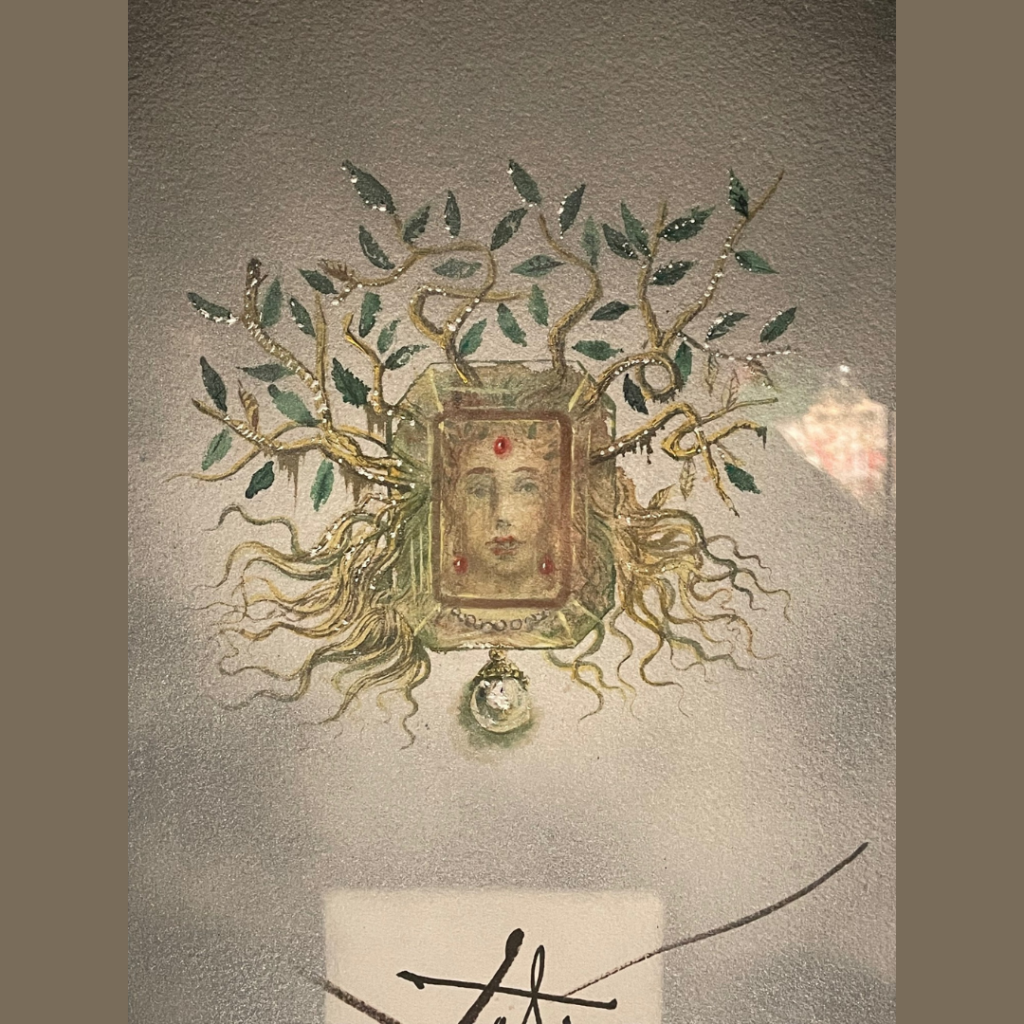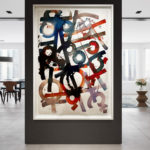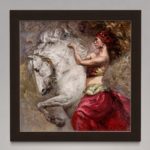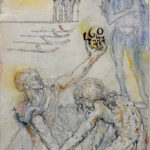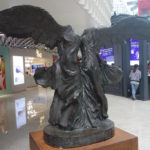“The difference between false memories and true ones is the same as for jewels: it is always the false ones that look the most real, the most brilliant.“
~Salvador Dali
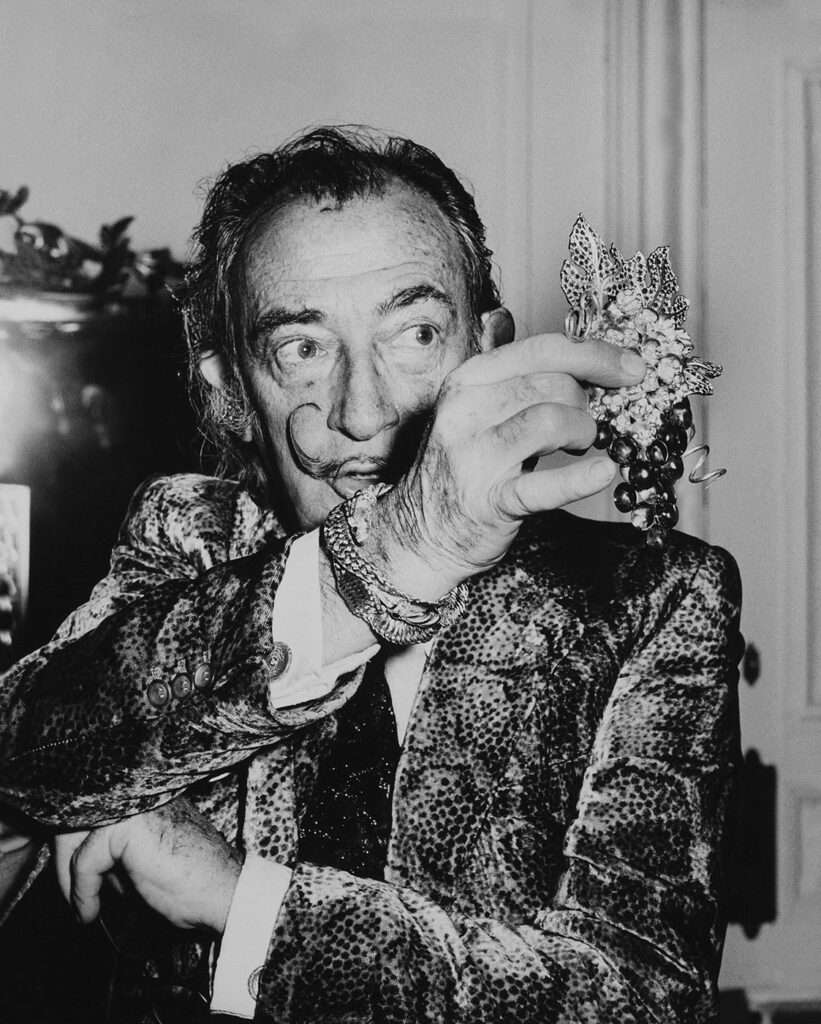
By Reed V. Horth and Kat Barrow-Horth, for Robin Rile Fine Art
In 1941, Surrealist artist Salvador Dali began a collaboration with celebrity jewelry designer Duke Fulco di Verdura, teaming to create five historic pieces together. The designs incorporated miniature paintings by Dali and elaborate jewelry by Verdura. The collection debuted at Julien Levy Gallery that year and would later move to the Museum of Modern Art for an exhibition of both Dali, as well as fellow Spanish master Joan Miro. Incorporating science and mathematics into his drawings, sculptures, fashion and assemblages Salvador Dali was a mid-century Renaissance man and his collection of jewelry was no exception.



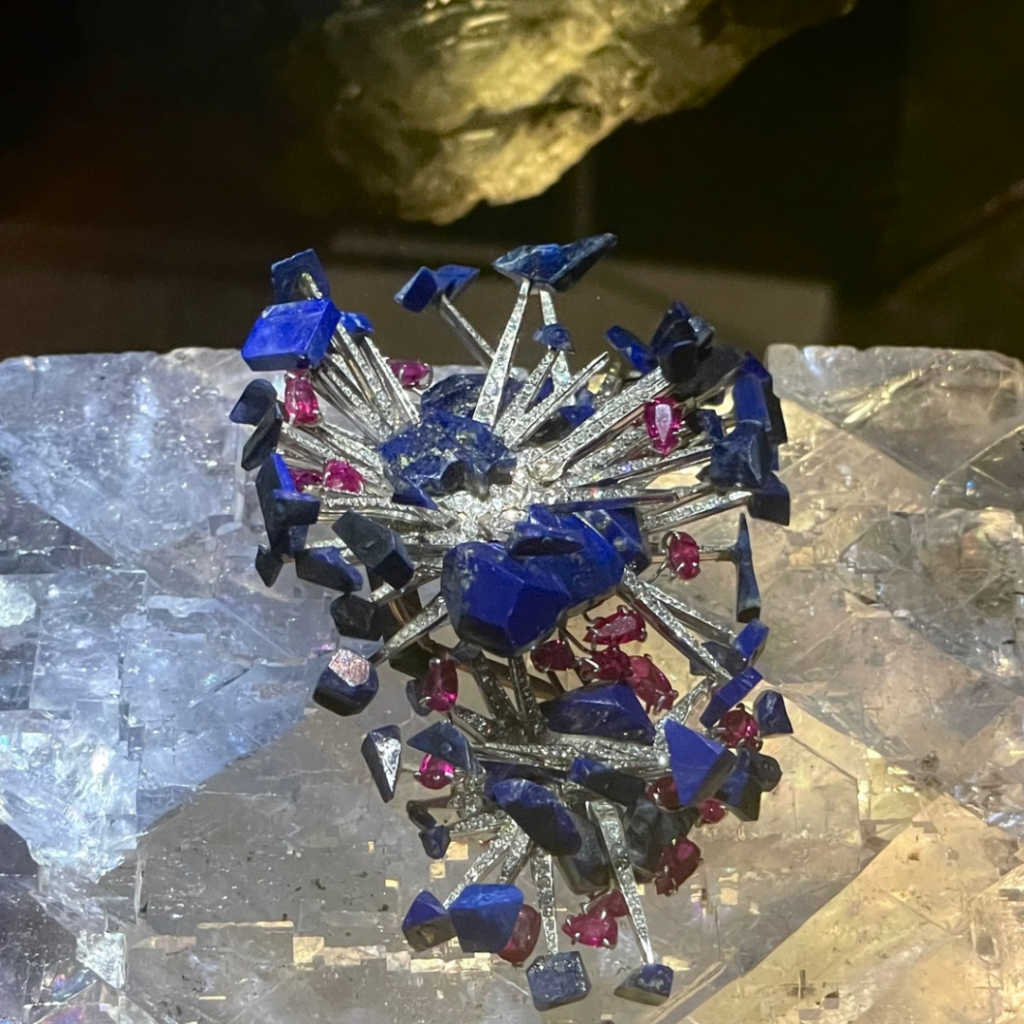
During the 1950’s, Dali would work with Argentinian designer Carlos Alemany to create more intricate jewels made from precious metals and stones including gold, platinum, diamonds, sapphires, rubies, pearls, topaz, emeralds, coral and lapis lazuli. The artist would design one-of-a-kind jewelry pieces, selecting the materials, colors, and shapes himself while intertwining themes of nature, religion and mankind. In 1958, collector Owen Cheatham acquired a large collection of the jewels and drawings which he exhibited often for various charities.


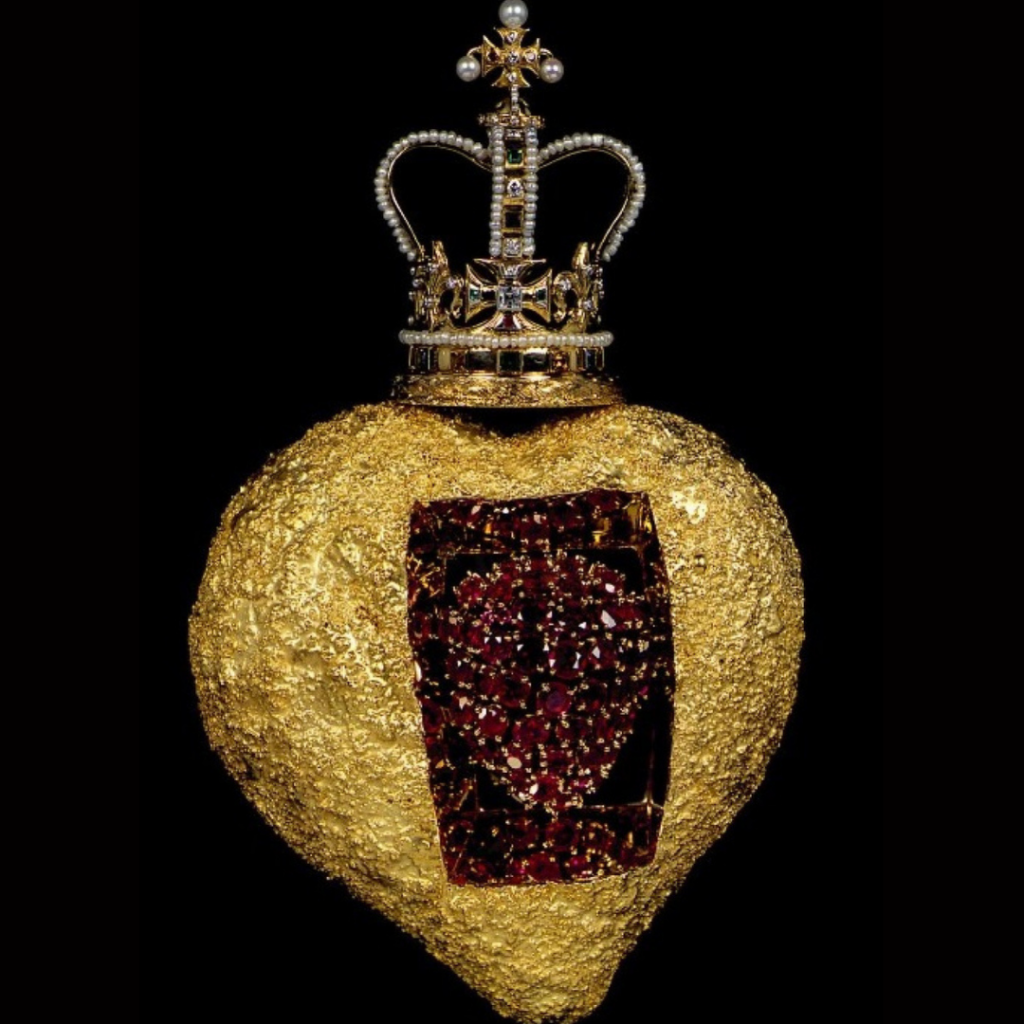
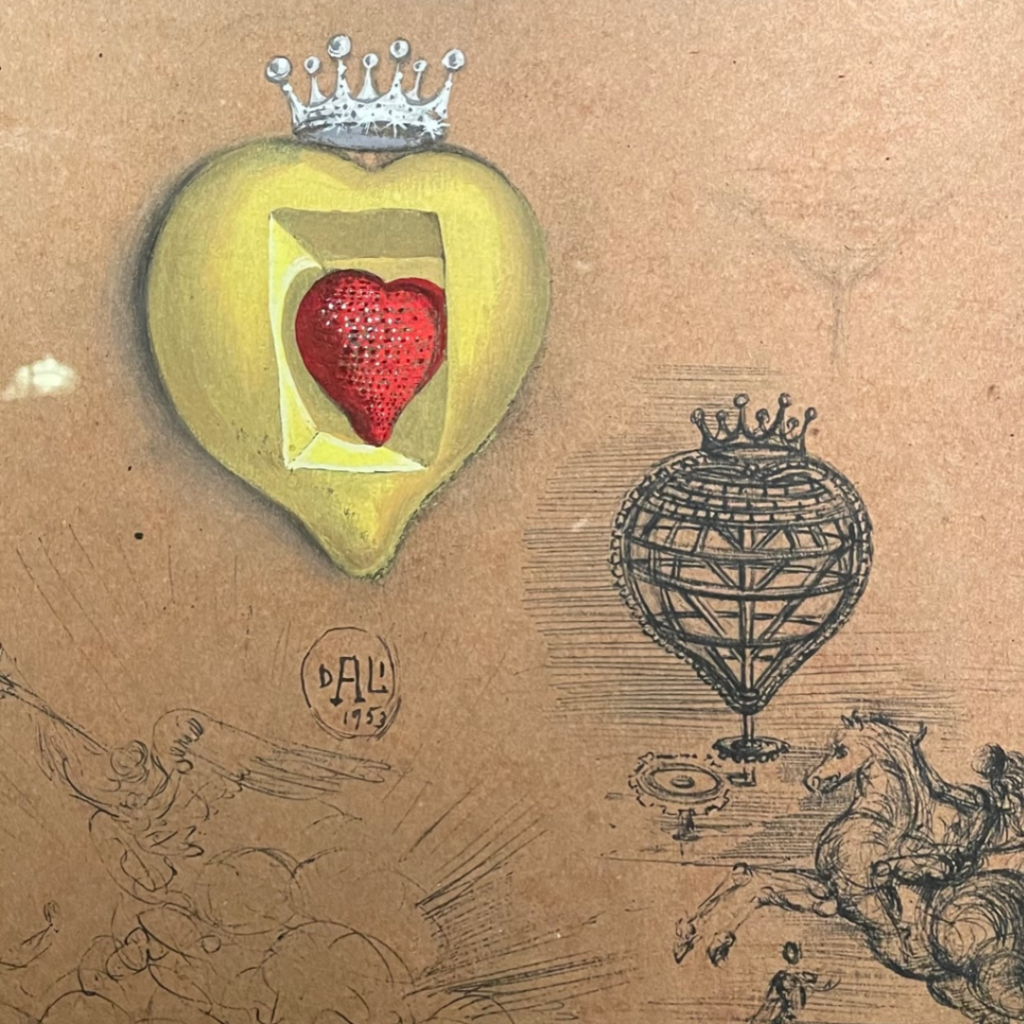
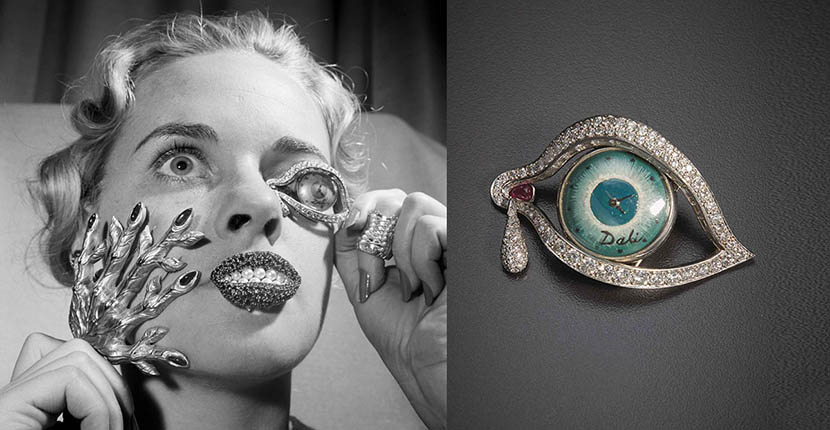
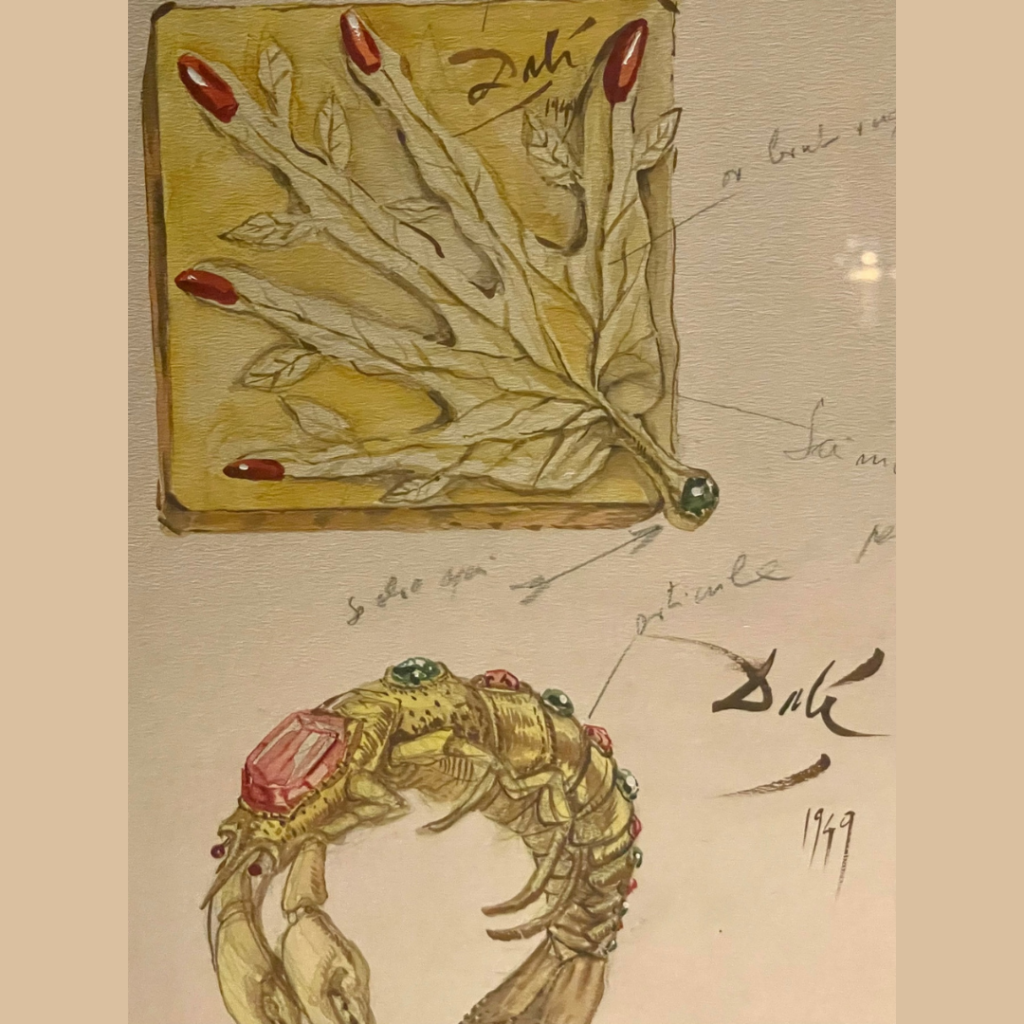
Verdura and Dali jewelry collaborations featured Dalí drawings set within a Verdura jewel. The “Apollo and Daphne” brooch had a gold Palladian door with a ruby and turquoise style pediment framing a Dalí drawing of the Greek god Apollo.

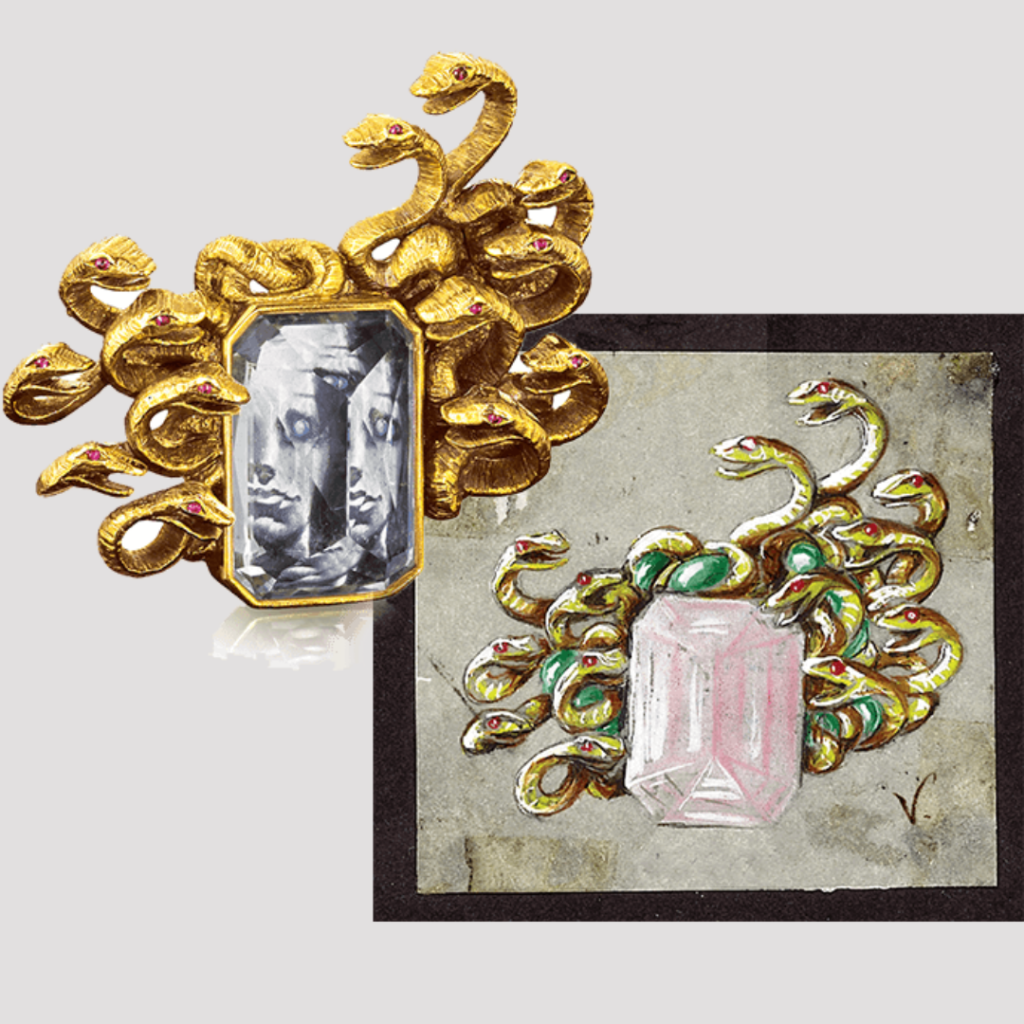

Truly Dalinian in form, the jewels are not what one would expect to find draped upon a woman’s neck. Several of the designs include mechanisms which make the jewelry appear alive, including a beating ruby heart, fluttering angel wings and a flower whose petals open and close. The artist noted “To history, they will prove that objects of pure beauty, without utility but executed marvelously, were appreciated in a time when the primary emphasis appeared to be upon the utilitarian and the material.”
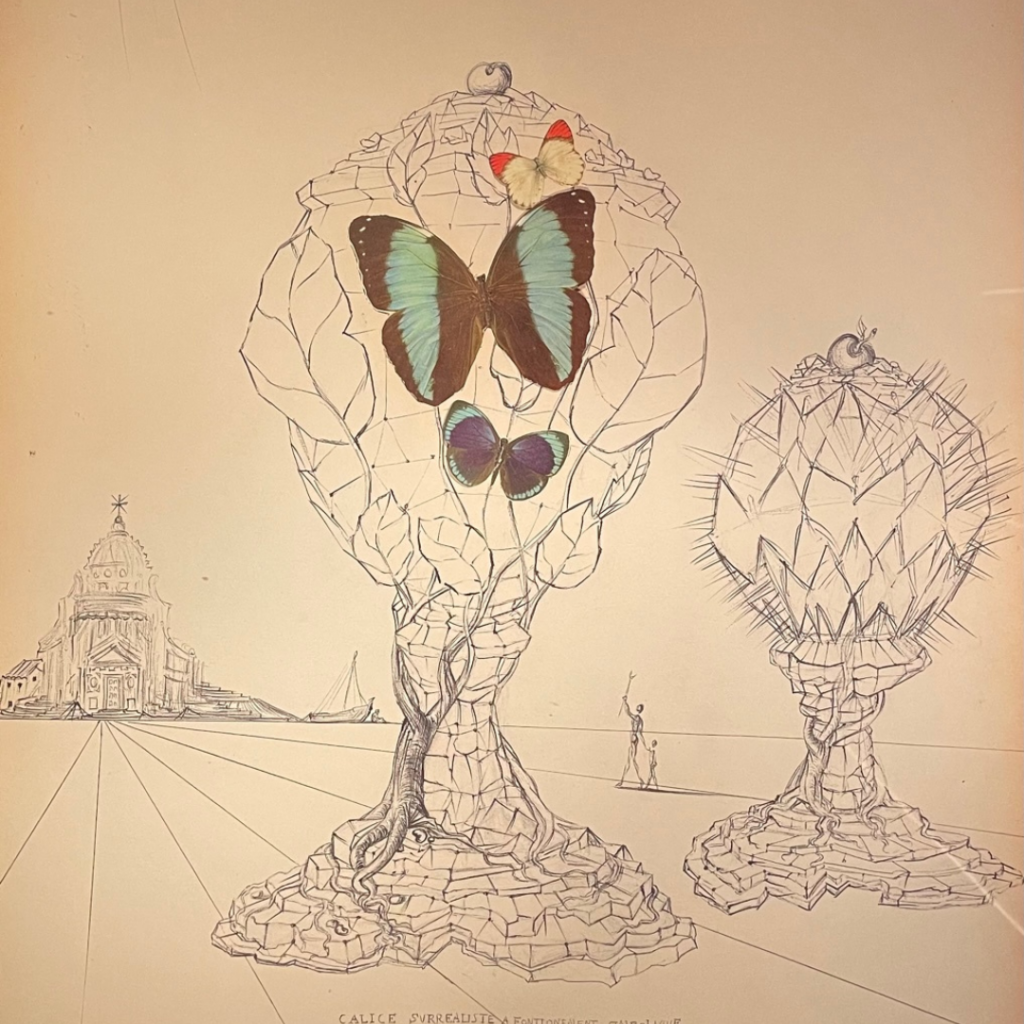


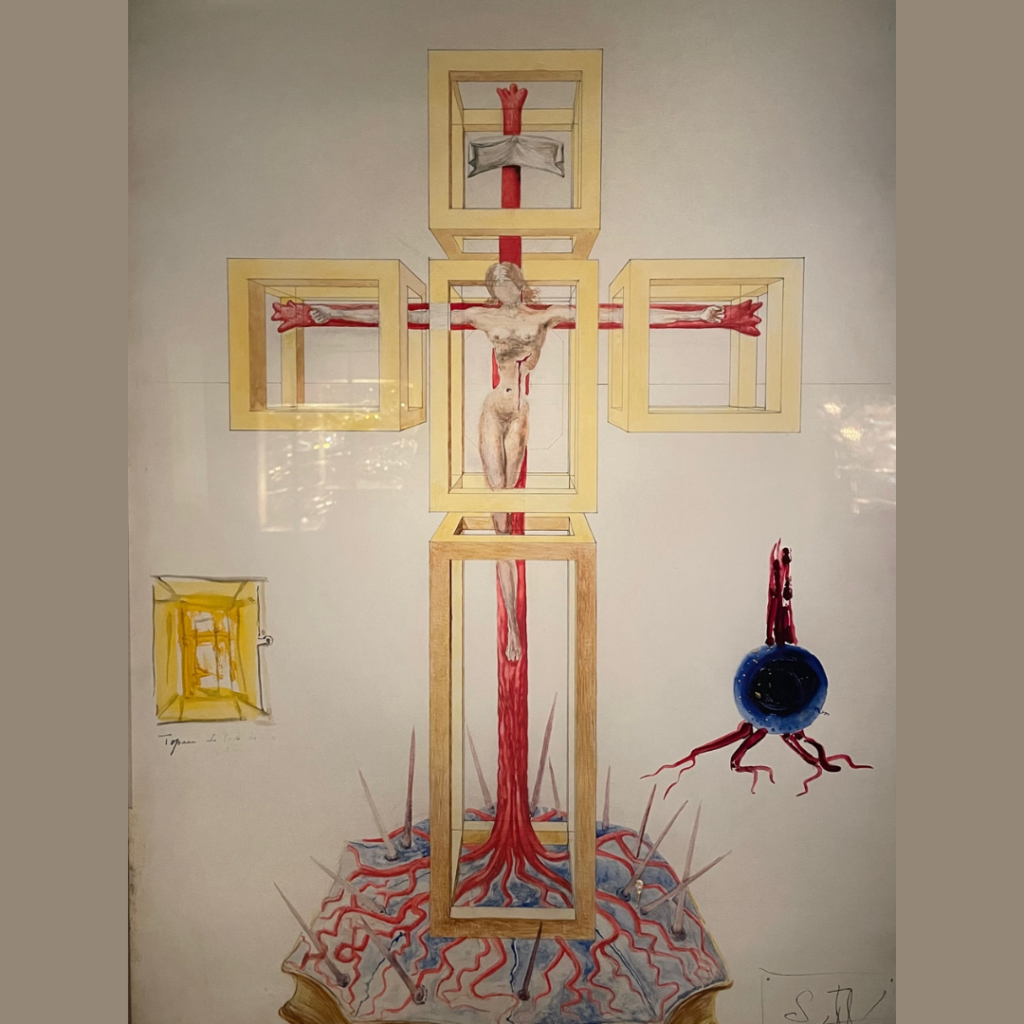
In 1999, the museum purchased the Cheatham collection for around EURO 5 Million. Today, thirty-nine elaborate jewels and corresponding drawings reside in the permanent collection of a darkened wing in Teatro-Museo Dali, the artist’s museum in Figueres, Spain. Showcased in glass, the various crucifixes, necklaces, brooches, animals and jeweled sculptures sparkle in a unique vision of Dali’s religious and theatrical iconography.
